Often recognized as the largest dogs in the world, Great Danes are big pups, who make big impressions on everyone they meet.
They’re instantly captivating, and I’d bet that every large dog lover in the world has considered adding one of these pups to their family at some point in time – I know I have.
You can get a Scooby-style Great Dane of your own if you like. You’ll just need to be willing to cough up a handful of cash and make the space necessary to accommodate one of these massive mutts. It’ll probably set you back somewhere between $300 and $3,000 to do so.
But before you run out and buy the first Great Dane you see, you’ll need to familiarize yourself with the breed and make sure that you can provide everything one of these wonderful canines needs.
We’ll introduce you to the Great Dane below, and explain some of the things to think about when picking out your own!
History of the Great Dane Breed
Despite their name implying Danish origins, Great Danes are thought to have been developed in Germany, sometime during the middle of the 17th century. No one knows exactly why they became associated with Denmark (as the AKC points out, they’re called Deutsche dog – meaning German dog — in Denmark).
The breed was likely first created by combining the English mastiff with the Irish wolfhound. They were originally used for hunting wild boar – one the most formidable prey that hunters pursue in the world.
Their size made them ideally suited for the job, as did the aggressive temperament Great Danes typically possessed at this time (this may be surprising to modern Great Dane owners but yes, these guys were once pretty ferocious). These were serious dogs, bred to perform serious work.
But over time, the Great Dane became more of a part-time watchdog and full-time family pet. This caused breeders to begin selecting for entirely different personality traits, and the gentle personality for which Great Danes are now famous was born.
Indeed, modern Great Danes are rarely interested in hunting down anything more challenging than a treat that has slid between the couch cushions.
In fact, some are downright skittish.
Getting to Know the Great Dane
It’s always important to learn as much as you can about any dog breed you intend to welcome into your home – and this is especially important when considering a dog that may weigh more than you do.
With this in mind, we’ll discuss a few of the basic traits and tendencies of Great Danes below.
Great Dane Size
Great Danes are truly massive dogs. Even the smallest females usually reach 100 pounds and stand 28 inches or so at the shoulder, but the largest males weigh twice this much and stand nearly 3 feet tall.
This size not only means that Great Danes need a lot of space (despite having relatively low-energy levels and being calm enough for apartment life, they’re just too darn big for most small spaces), it also means they’ll:
- Need more food
- Incur more expensive veterinary bills
- Be more difficult to control when going for walks (a sufficiently motivated Great Dane will easily drag a small owner around the park).
You’ll also have to buy larger leashes, collars, Great Dane-sized beds, clothing, and XL dog crate suitable for Great Danes – all of which are likely to be more expensive than “normal” sized versions.
While going after a Great Dane mix might negate some of the extreme sizing, there’s no guarantee you won’t still end up with a massive pooch!
Great Dane Personality
Great Danes are famous for their gentle nature. They’re sometimes slightly shy or aloof, but they are rarely aggressive or nervous around people.
And while you should never leave a large dog unattended with small children (accidents are always a possibility, and more than a few Great Danes have been known to accidentally topple toddlers simply due to their massive size), Great Danes typically make wonderful playmates and chaperones for older kids.
They are often protective of their families, but Great Danes don’t usually respond to every knock on the door as though it is an existential threat. Their great size provides them with great confidence, which means that they rarely overreact to unfamiliar people, sights or sounds.
They aren’t quite as sharp as poodles, border collies, or other brainy breeds, but Great Danes are pretty intelligent dogs who are usually easy to train. Most learn routines very quickly, they’re rarely difficult to house train, and many make great candidates for therapy and service work.
Great Danes often bond very strongly with their peeps, and they don’t like being left alone for long periods of time. They’re pretty susceptible to separation anxiety, and this can lead to serious problems. A 200-pound dog with a destructive chewing habit can quickly cause thousands of dollars’ worth of damage.
Great Dane Energy Levels and Exercise Requirements
One of the most appealing aspects of Great Danes for many owners is their relatively low energy levels. If you think of a beagle or Australian shepherd as a 7-year-old child waking up on a Saturday and bolting out the door to go play with his friends, a Great Dane is your retired grandpa who needs a nap after lunch.
This doesn’t mean Great Danes don’t need exercise, because they do. They just need less than many other breeds. While most will enjoy the chance to visit the dog park and play with the other canines a couple of times a week, they can likely satisfy most of their exercise requirements by going for a couple of long (more than 20 minutes) walks each day.
Coat and Grooming
Great Danes have fairly short coats, which don’t require a lot of grooming. They shed a moderate amount, but weekly brushings and monthly baths will help reduce the amount of hair you find covering your couch and carpet. Most will never need the services of a dog groomer.
Great Danes usually come in one of six different colors:
- Black
- Blue
- Brindle (aka tiger-like stripes)
- Fawn (yellowish-tan)
- Harlequin (white and black patches, like the handsome devil seen below)
- Mantle (black with white on muzzle, legs, and chest)
Note that Great Danes are drool-producing machines. This may not bother some owners, but others may find it extremely off-putting.
Growth Rate and Lifespan
Like most other big breeds, Great Danes grow pretty quickly, and they keep growing for a long time. Most won’t reach their full adult size until they’re at least 18 to 24 months of age. But while they grow quickly, they mature slowly. They’re typically pretty puppy-like until their third or fourth birthday.
Unfortunately, Great Danes have pretty short lifespans, which is also a common trait of large breeds. Most will only reach 8 to 10 years of age.
Common Health Problems for Great Danes
Great Danes are more susceptible to a handful of health problems than many other breeds are. Some of the most common ailments that afflict the breed include:
- Hip Dysplasia – Hip dysplasia is a painful and mobility-limiting condition that results from the improper development of the hip joint. The severity of the condition varies widely. Some individuals may only need a comfy bed to ease hip dysplasia pain and an omega-3 supplement, while others may require surgery.
- Bloat – Bloat is a potentially fatal condition in which a dog’s stomach twists on its axis and fills with air. Vets don’t understand exactly why this happens, but it appears most common in deep-chested breeds, like the Great Dane. Many vets recommend feeding bloat-prone breeds smaller meals, and it’s also important to make sure your Great Dane rests for about 30 minutes following meals – don’t let him run around and play right after eating.
- Osteosarcoma – A fancy word for bone cancer, osteosarcoma is more common in Great Danes than many other breeds. And unfortunately, it often strikes relatively young individuals. While the disease is treatable, it typically requires amputation of the affected limb and a course of chemotherapy.
- Cardiac Disease – Many Great Danes end up suffering from cardiomyopathy – a condition that results in an enlarged heart – and a variety of valve defects. Some of these conditions can be treated, while others will cause long-term problems and likely shorten the dog’s expected lifespan.
To avoid these types of conditions, be sure to obtain your Great Dane from an ethical breeder, who chooses his or her breeding stock carefully and screens for common health problems. It is also important to visit your vet often, to help catch any potential problems early.
The Ideal Home for a Great Dane: Is Your Family a Good Match?
Before you decide to add a Great Dane to your family, you should seriously consider the way one will fit into your home (both literally and figuratively).
There are no hard-and-fast rules that will distinguish good families from not-so-good families for a Great Dane, but you’ll probably want to select another breed unless the following criteria apply to your family:
- You have a reasonably spacious home and, ideally, a fenced-in, canine-friendly yard.
- Your family is comprised of adults and older children, or you have the time to supervise interactions between these big dogs and young kids.
- At least one of the family members spends a significant amount of time at home.
- You are comfortable with the relatively short lifespans of these lovable dogs.
- You have a car large enough to accommodate a 200-pound dog during trips to the vet or park.
- You are comfortable with large dogs and willing to put in the time and effort to train one properly.
- You have the financial means to care for a large and expensive pet.
- You have experience with large breeds. Great Danes are typically pretty easy to care for, but their size may overwhelm those who are used to Shih Tzus and Chihuahuas.
Factors That Affect the Price of a Great Dane
Most dog breeds vary a bit in price, and Great Danes probably vary more than most. We’ll explain some of the reasons for this variation in price below.
Geography
The costs for many things vary from one metropolitan area to the next. You’ll pay more for a cup of coffee in San Francisco or Manhattan than you will in Lansing or Santa Fe.
This same principle applies to Great Dane prices. Breeders, retailers, and rescues operating in places with a high cost of living will need to charge more for their pups than those who are located in places where rent, utilities, and labor are cheaper.
There’s not much you can do to get around this. You can try looking for breeders in nearby, but more affordable, areas, and you can consider purchasing a dog from a breeder located in some other portion of the country. But because you’ll spend more on gas or shipping costs in these situations, you’ll rarely save much money by doing so.
Age
Most people who decide to purchase a new dog want an 8- to 12-week-old puppy. Knowing this, most breeders and retailers charge more for puppies in this age range, and they’re usually able to sell them pretty quickly.
But there are exceptions, and breeders and retailers are occasionally left with an unsold puppy. This creates two problems: The seller must now spend more money on the puppy’s care than he or she originally intended, and the dog is becoming less and less valuable by the day.
The end result is that breeders and retailers often begin slashing the price of dogs that are 4 months of age or older. So, consider looking around for a slightly older animal if you’d like to save some cash.
“Quality”
I put the word quality in quotes because it is important to understand that every floof is a good floof. This applies to flea-ridden mutts scavenging for trash in alleys and purebred Great Danes, who’ve been coddled since birth. There’s no such thing as a “low-quality” dog.
However, some individuals are in higher demand than others, and breeders understandably try to cash in on these sought-after pups. Sometimes, these differences relate to a dog’s heritage, and at other times, these price differences will relate to a dog’s color pattern or size.
There’s also a flip-side to this coin. Some puppies may be a bit small or exhibit slightly duller coloration than others. Others may be the product of relatively run-of-the-mill parents, rather than an award-winning pair.
So, you’ll need to factor in these price differences when shopping for your new Great Dane. If you are looking for a dog who’ll collect ribbons and trophies in the show circuit, you’ll probably end up spending a bit more money; if you are looking for a lovable pet, and don’t mind small “flaws,” you’ll probably be able to save a few bucks.
Breeder Vs. Retailer Vs. Rescue Vs. Shelter
The place from which you acquire your dog will also affect its price. In fact, this will likely influence the price of your new pup more than any other factor.
Shelters are typically the most affordable place to acquire a Great Dane – most only charge a nominal fee to help cover the costs they’ve incurred while caring for the pooch. However, Great Danes in shelters won’t come with paperwork, you probably won’t know much about their past, and they’ll usually be several years old.
You will often be able to learn more about the history of a pup from a Great Dane rescue organization than a shelter, as rescues often acquire their dogs directly from their previous owners. You may even be able to find a relatively young Great Dane with the help of a rescue. Expect to pay between $300 and $500 to adopt a new Great Dane from such an organization.
However, if you really want to know everything about your new pooch and have the opportunity to meet his parents, you’ll want to acquire your new Great Dane directly from a breeder. You’ll pay more to do so – breeders typically charge between $800 and $3000 for their puppies – but you’ll be able to choose from a wide variety of young pups when doing so.
Retail pet stores are usually the most expensive place to acquire a Great Dane. After all, the pet store has to purchase the dog from a breeder, which means they have to charge even more when they turn around and sell the dog to you. You should probably be prepared to pay at least $2,000 for a Great Dane in a pet store.
Honestly (and I say this at the risk of offending pet store owners), I don’t understand why people buy dogs from pet stores. You’ll get less value for your dollar by doing so, and you won’t be able to meet the parents, either.
Additionally, pet stores are not an ideal environment for dogs. Pet-store life is not only stressful for canines, it can expose them to a number of diseases, thanks to the constant parade of animals that come through their doors.
Further, while there are a handful of pet stores who obtain their stock from reputable breeders, this is the exception and not the rule. A depressingly large number of pet stores source their animals from puppy mills.
I won’t say that you should never purchase a dog from a pet store, but there are generally much better options available for all parties involved.
Where Can I Get a Great Dane?
If you have the means to do so, you should probably try to obtain your new Great Dane from an ethical and conscientious breeder. This will give you the chance to meet your pup’s parents, and you will probably be able to meet several different puppies and pick the one you bond with best.
We’re not going to advertise for any specific breeders, so just head over to Google and start looking for breeders in your area. Just make sure to do your due-diligence with breeders – we have an article all about how to evaluate a reputable breeder here.
If you need to find a Great Dane for a more affordable price, your best bet is to head to your local shelter or contact a Great Dane rescue organization in your area. You’ll have to find a shelter on your own (again, Google is your friend), but we’ve listed a few prominent rescue organizations below.
- Great Dane Rescue Inc. (Various geographic areas)
- Harlequin Haven Great Dane Rescue (Ohio)
- Rocky Mountain Great Dane Rescue
- Upper Midwest Great Dane Rescue
- Great Dane Rescue of the Carolinas
- The Mid-Atlantic Great Dane Rescue League, Inc.
- Great Dane Rescue of Minnesota & Wisconsin
- Northwest Florida Great Dane Rescue
- Great Dane Rescue of North Texas
- Great Dane Rescue of New England
- Great Dane Rescue of the Commonwealth (Virginia)
- California Great Dane Rescue
- Southwest Great Dane Rescue
- MAGDRL Great Dane Rescue – Pennsylvania and Delaware Chapter
- Great Dane Rescue Alliance (East Coast)
Great Danes really are fantastic dogs for some families, and I’d encourage anyone with the necessary space, time, and resources to give the breed serious consideration.
A few years back, I had the chance to meet a sweetheart of a Great Dane named Scarlett. She was 150 pounds of khaki-colored charisma, and I was quite fond of her. I got to know her quite well over time, as we’d cross paths each morning while she was out walking with her family.
The moment she spotted me, she’d always break into an excited trot and run over to me to claim her daily allotment of puppy-talk and scritches. A few moments later, she’d run to catch up with mom and dad and go back on her gentle way. I still smile whenever I think about that wonderful dog.
Have you ever had a Great Dane? We’d love to hear your stories. Your experiences may help others decide if the breed is right for them!
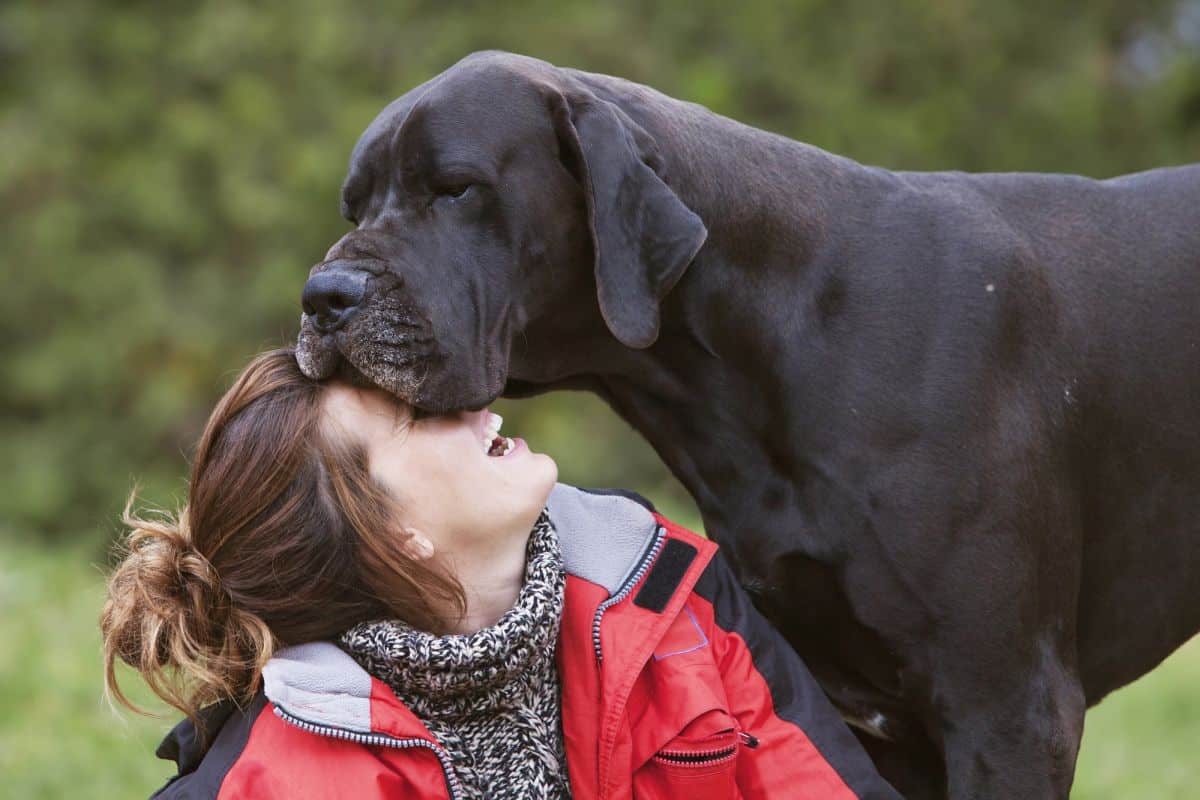
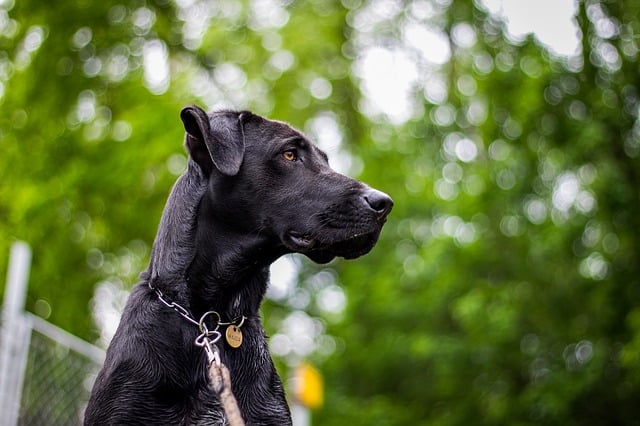
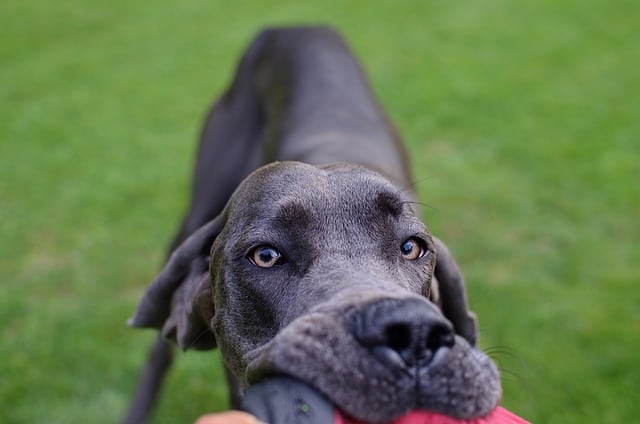
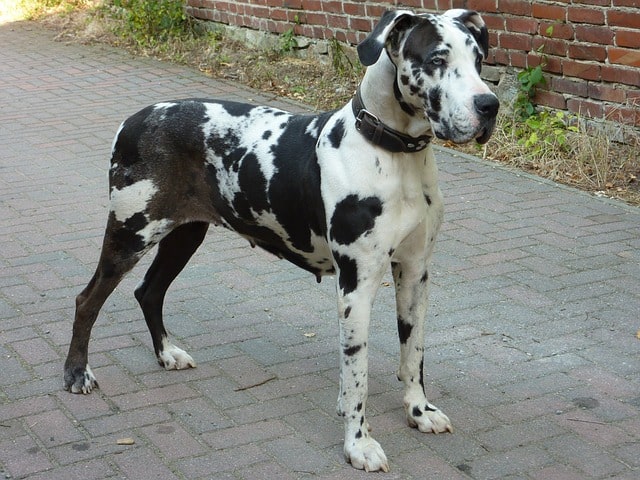
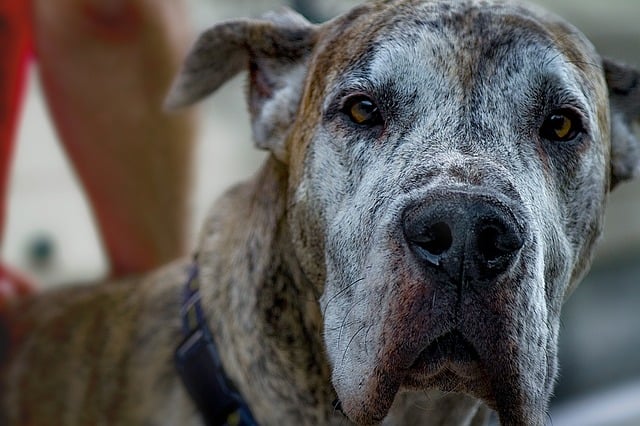
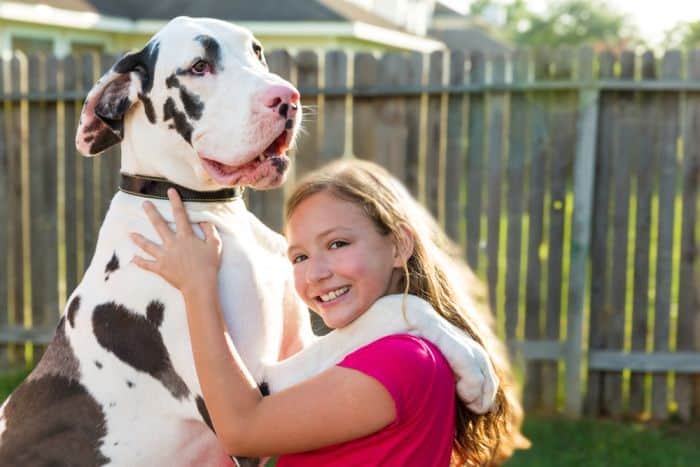
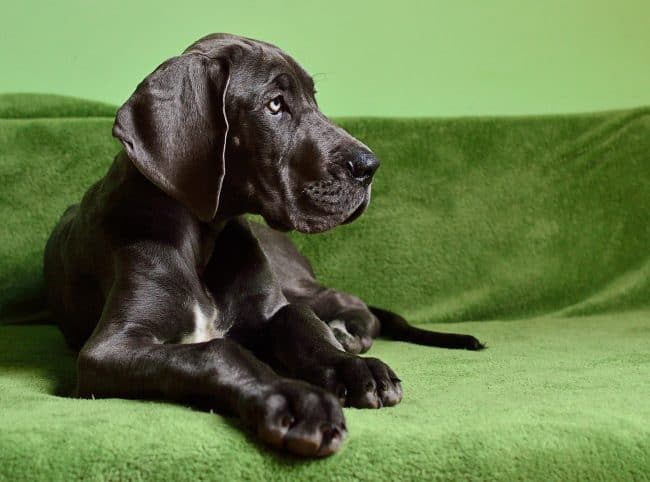
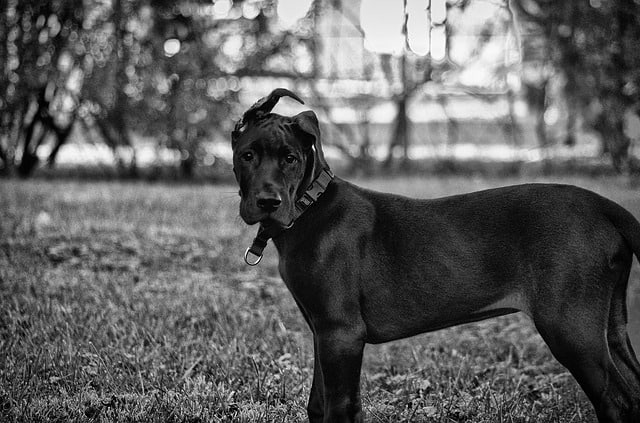



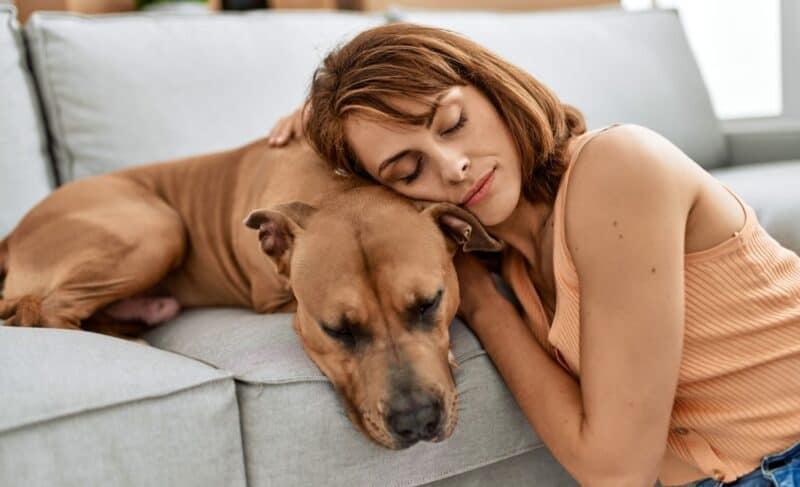
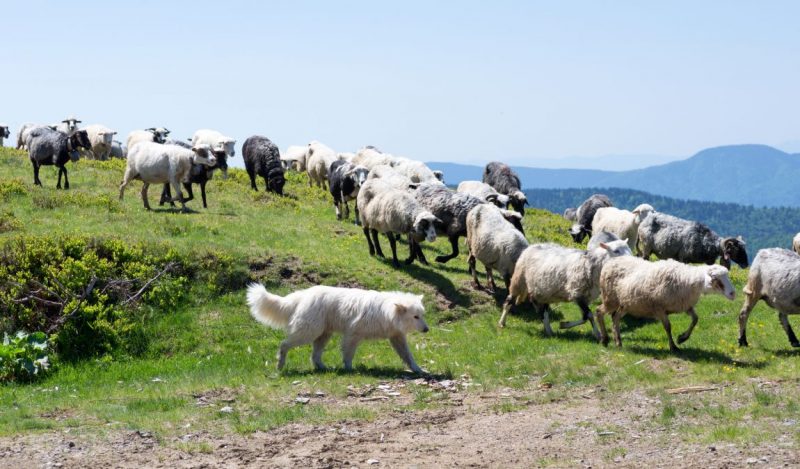
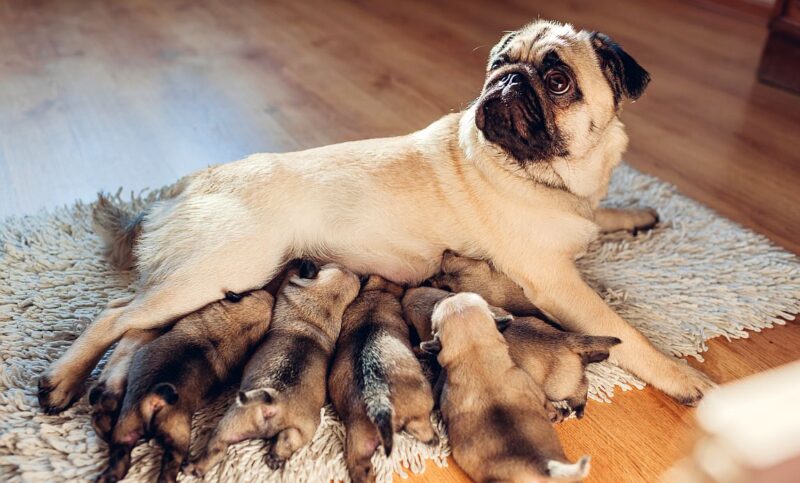

Leave a Comment